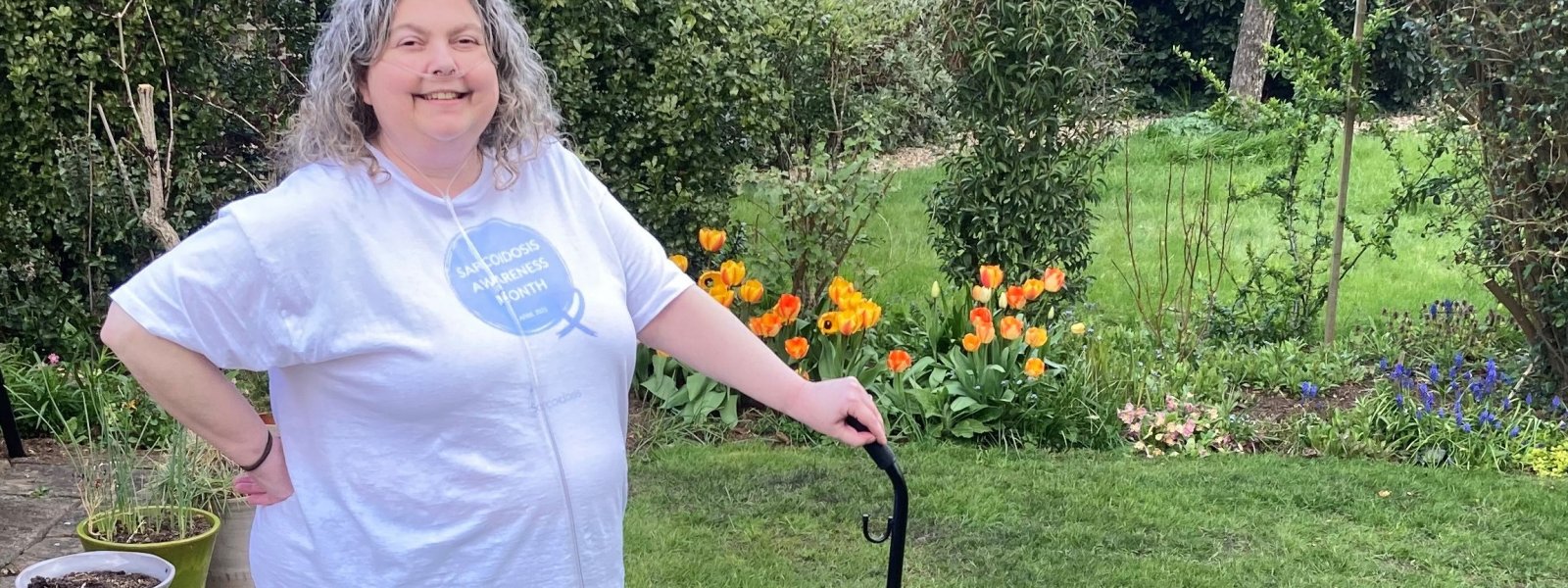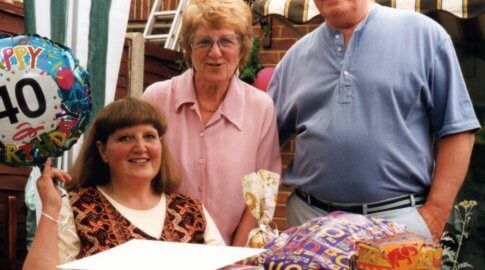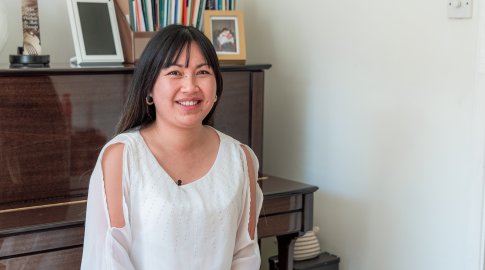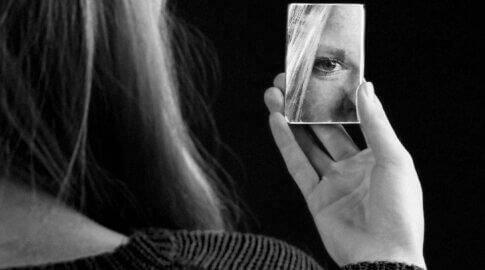My marathon, my way
Despite 24/7 oxygen and two serious diseases, PHA UK member Juliet Coffer is determined to live each day to the full. After discovering the benefits of moving more at home, she decided to revisit her dream of taking on a marathon by completing her own version instead – covering 3km across 30 days, all without leaving her living room.
Juliet spoke to us halfway through her challenge; reflecting on her motivations, her achievements, and why she refuses to ever give up.
“My pulmonary hypertension is a result of sarcoidosis – which occurs when inflammatory cells clump together to form ‘granulomas’. In my case they are around my lungs, which led to the PH diagnosis about ten years ago.
Both diseases are progressive and I’m continually deteriorating, but I want to continue to live life, not wait to die. There’s a big difference.
Moving more
During a recent consultation with my PH team, we discussed the possibility that some of my problems were down to my muscles being so weak due to not moving much, so I was referred to the physiotherapist attached to my specialist centre.
I spoke to Katie on the phone, and that’s how my big walking challenge began.
At this point, I was barely moving as being on the oxygen and having limited lung capacity makes things very difficult. Simply bending over takes the oxygen out of my lungs. Everything I do has to be planned and the process having a shower takes me two hours start to finish.
It can take me a couple of hours of sitting on the bed when I wake before my body has the strength to move. And If I make a meal, I have a controlled plan that enables me to move methodically along the kitchen without having to go back and forth.
I spend most of the day sitting at the computer, and do a few hours of work before a nap, and then a few more. So, we were pretty much starting from nothing.
Katie suggested to start slowly and work within my limits. She sent me through a document about breathing and the breathlessness scale so I could keep a check on that, and suggested I do small amounts a few times a day – things like standing up out of a chair and sitting back down again or walking on the spot to get my ankles moving.
It was a case of building things up slowly and I was surprised at how much I could do, once I started.
Taking it to the next level
Shortly after my chat with Katie, I found out that April was sarcoidosis awareness month, and supporters were being encouraged to take on a ‘warrior walk’ – covering 100 miles in a month.
It sparked something in me, and I started to think how I might be able to take on my own challenge. I decided to scale it right back to suit my limitations and chose to do 3000 metres (3km) over the 30 days of April instead. It was absolutely Katie’s intervention that gave me the confidence to decide to do this.
I have wanted to run a marathon since the 80’s, and used to get up early year on a Sunday morning in April to watch the wonderful, enthusiastic runners in the London Marathon.
Getting diagnosed with sarcoidosis and then PH put paid to my marathon dream, but after I started doing some exercise at home, I decided that dreams still can come true.
To most people, 3km in a month probably doesn’t seem very far, even verging on the ridiculous – but not for me.
To help me decide on the distance, I did some trials. I walked 100 metres on one day, and doubled it to 200 the next. I got over-excited and tried 300 the following day but it made me really ill, and I was ordered by the doctor to go to bed and rest for a few days.
It was too much, too soon, so we decided 100 metres a day would be manageable.
My oxygen machine lives in the lounge, which is five metres in length, so I’ve been walking from one end to the other and counting the laps. I have rests in-between and keep an eye on my oxygen levels and pulse; I don’t worry about how long it takes me.
Enjoying the benefits and looking to the future
Moving more has made me feel much more positive. Not leaving the house means it’s easy for me not to push myself and I could have carried on like that forever. But I feel so much better for actually doing something.
I have a stance that I wake up and every day is a new day to get on with. I don’t want to be someone who sits in a chair staring at a TV forever. I don’t want to become that person.
Physically, the walking has helped me feel more movement in my limbs and without tempting fate, my lungs and breathing feel better. Plus, I’m hungry for the first time in a year which is great. Because I’m moving, everything seems to work a bit better. If nothing else, doing a little bit of exercise each day just makes everything feel a bit more positive.
I’m well aware that you need to help yourself to keep going and for me, the exercise is part of that.
I will continue to walk after the challenge, and to keep motivated I plan to log each lap I complete. I like to use old-fashioned gate charts on a piece of paper.
I will also set an alarm so that I get up from my computer every hour, and set myself targets each day. It’s important to have a plan of what you are going to do.
My motivation for the walking challenge was to raise money and to help people, and I want to continue that help in whatever way I can. For example, I’ve joined the patient group for our local GP surgery because I want to make things better for those using it with long-term chronic conditions.
You’ve got to have a purpose for living. I was told my conditions can’t be treated anymore, but I don’t want to be a victim.
My life is different from everybody else’s but I make the most of it. I don’t see myself as brave, courageous and inspiring, I just see myself as living life in my own way. And if I can leave the world in a better place, then I have achieved something good.”
















